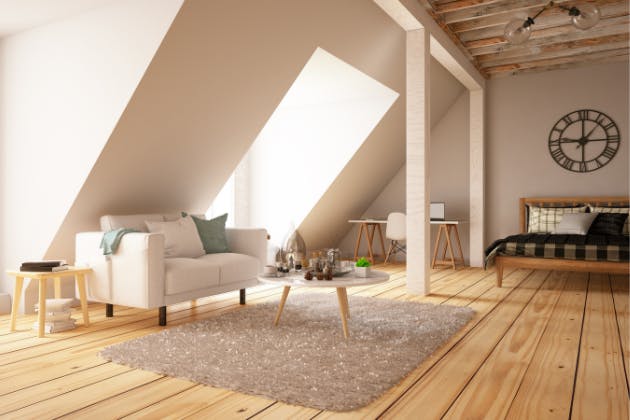A loft conversion is one of the most rewarding ways to increase your home's space and value, but not every loft is ready to become a usable room. From ceiling height and floor space to structure and compliance, several critical elements need evaluation before work begins. Here’s what you should know before planning your loft transformation.

Key Checks Before Starting a Loft Conversion
Headroom Requirements
Before converting your loft, it’s essential to assess whether there’s enough standing room. While the minimum head height is often stated as 2.3 to 2.4 metres at the highest point, insulation and ceiling finishes usually reduce this to about 1.9 metres. For the space to feel comfortable and functional, aim for a finished headroom of at least 2.1 metres.
Floor Space and Layout
Your loft needs adequate floor space to make the conversion worthwhile. In most cases, you’ll need a minimum of 70 square feet, though this may vary based on local regulations. Don’t forget to consider the positioning of the staircase and how it will affect the usable layout.
Roof Pitch and Construction Type
The pitch of your roof has a direct impact on the amount of usable space available. A pitch of 30 degrees or more is ideal, offering more vertical space. If your home has a lower pitch, or if it uses modern trussed rafter construction, you may face challenges that require structural alterations, such as steel reinforcements, to create a safe and usable room.
Building Regulations and Approval
Converting a loft isn’t just about creating a new space, it must be done in line with building regulations. This includes fire safety, sound insulation, stair access, and structural stability. You’ll need to submit plans to your local authority or use a building control service to ensure full compliance before and during construction.
Professional Survey and Design Advice
Hiring a professional to carry out a loft survey is one of the smartest early steps. A qualified surveyor can identify potential issues, measure accurately, and offer advice on the best way to convert your loft. Their insights will help you avoid costly surprises and ensure your plans align with both structural needs and legal requirements.
Light, Ventilation, and Budgeting
It’s important to plan for natural light and ventilation, skylights or dormer windows can make a big difference to comfort and compliance. Also, be realistic with your budget and timescales. Structural complexities, especially in homes with trussed roofs, can increase the cost and duration of the project, so build in contingency.
Looking to convert your loft in Bothwell, Bellshill, or Hamilton?
HW UK Services offers expert loft conversion assessments and professional project execution tailored to your home. Call us on 07518 884171 or fill out our contact form to book your consultation today.


